#1800s**
Text

Black Satin Brocade Bodice with Yellow Flowers and Green Velvet Bows
c.1890
made by American designer Miss Foley
brocaded silk satin, cotton net, and beads
Phoenix Art Museum
#so beautiful#1890s#19th century#1800s#fashion history#historical fashion#history of fashion#19th century fashion#late 1800s#late 19th century#frostedmagnolias#fashion#history#historical clothing
1K notes
·
View notes
Text

The Serenade, Leonard Raven-hill ((British, 1867–1942)
#vintage#vintage aesthetic#aesthetic#painting#romantic academia#romantic art#love#art history#artist#artwork#canvas#art#fine art#oil on canvas#british art#romantic#lovers#vintage art#old paintings#oil painting#1900s#1800s art#1900s art#1800s#classical art#classics#old art#leonard ravenhill#old aesthetic
286 notes
·
View notes
Text

Percy Lancaster (British, 1878–1951)
Two Elegant Ladies on a Hill Before an Extensive Landscape
255 notes
·
View notes
Photo
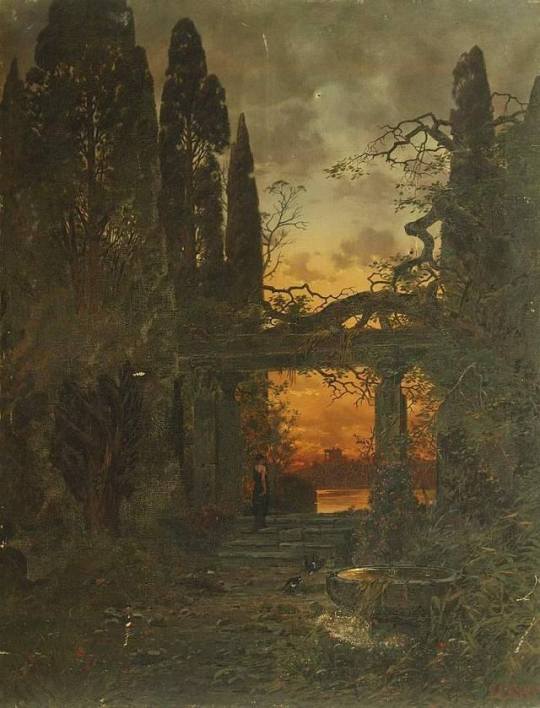
146 notes
·
View notes
Text
Which Underrated Woman from History are You?
Finally got around to making a uquiz featuring six of my favourite women from history! You can either get someone from the French Revolution, Roman Republic (I know, how unexpected!) or from 1700s/early 1800s.
Featuring scientists, writers, politically active icons and a few poets whose lives were intertwined with theirs, as a treat!
Enjoy and thanks everyone for sharing! ✨
#frev#french revolution#ancient rome#roman republic#history#tagamemnon#uquiz#tumblr quiz#which are you?#age of enlightenment#1700s#1800s#romantic era#18th century#19th century#émilie du châtelet#fulvia#clodia#mary shelley#ada lovelace#lord byron#literature#women's history#uquiz link#personality quiz#quiz tag#percy bysshe shelley#lucile desmoulins#camille desmoulins#catullus
80 notes
·
View notes
Text
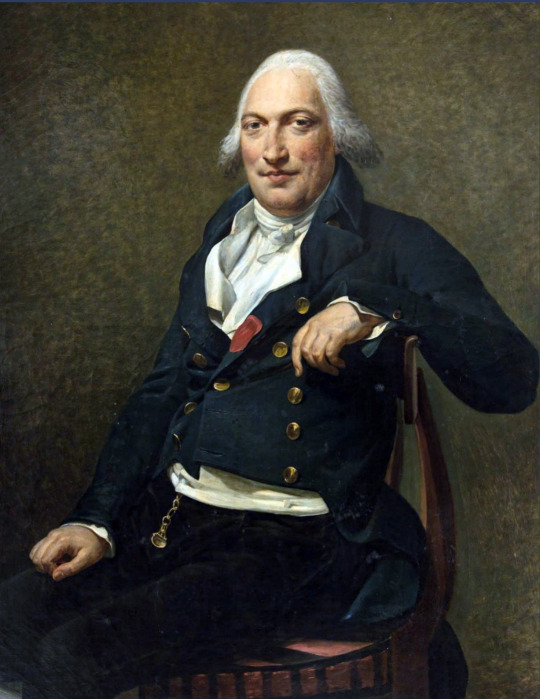
1805 Marie-Guillemine Benoist - Portrait of Claude-Ignace Brugière, baron de Barante
(Louvre Museum)
37 notes
·
View notes
Text

Juice glass, late 1800s, Austria.
31 notes
·
View notes
Text
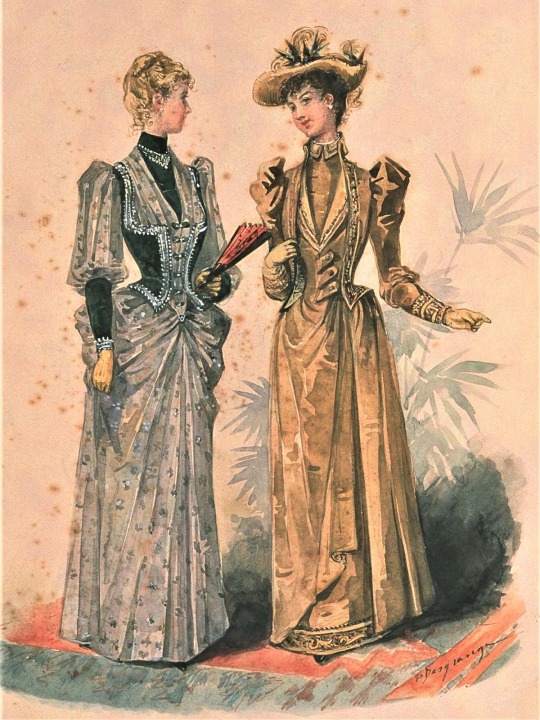
La Mode Illustree 1891
#historical fashion#historical#history#historical clothing#fashion#historical dress#long dress#textiles#victorian#victorian era#the gilded age#fashion plate#gown#dress#high fashion#old fashioned#victorian dress#1890s dress#1890s fashion#1890s#1800s dress#1800s fashion#1800s#19th century fashion#19th century#fashion dress#victorian clothing#victorian fashion#fashion magazine#artwork
28 notes
·
View notes
Text
(warning: there is sexism and sexist ideas in this analysis because I refuse to sugarcoat the time period that RDR2 takes place in. Arthur is a product of his time and though it isn't shoved in your face, it's still there. Understanding the gender dynamics of this time period makes the characters much more understandable, nuanced, likeable, and better, if I'm being frank.)
I don't ship Sadie and Arthur, at all, it makes no sense to me besides two people liking the characters and thus putting them together. I like them as friends but that's about it.
And let's be so real for a second- even if they do get together for whatever reason, they absolutely wouldn't be compatible as partners because its been shown time and time again that Arthur believes in gender roles and gets visibly annoyed or angry when a woman takes up a man's role when a man is there or when a woman does something he thinks is unladylike in their line of work (just listen to his antagonization of Abigail (for her past as a prostitute, usually), Sadie, Karen, prostitutes, and female performers, all women who take on unconventional roles in their life(also pay attention to certain mission dialogues, and cutscene body language)).
Sadie proves herself as capable, and Arthur works with her, but he makes quips about her behavior or subtly judges her or makes fun of her("Oh, I'm sorry princess. Was there an insufficient feather in your pillow?" "You got a pair of pants and all of a sudden you think you're Landon Ricketts?" "You want to ruuuunnnn with the men?" "Few more like her and there wouldn't be much of a world left." "That ain't what you mean- I can still fight!" Or him being visibly annoyed when she doesn't take his hand to enter the boat and other similar things like that)
Arthur believes that a man should be the one doing the work that revolves around such physical exertion and if he isn't the one doing those things for a woman, he feels as if he is failing in his role as a protector and provider, which then provokes annoyance or in some cases, even anger. Sadie doesn't care about this obviously, and Jake Adler didn't either, hence why they worked so well together as a couple.
Not Arthur though. To put it quite simply, he prefers and is compatible with women who believe in the same gender roles as he does (Mary Gillis, Abigail Roberts, etc.).
This doesn't mean he dislikes Sadie, because it's quite obvious that he is fond of her, but given the intimacy of a relationship, Sadie would get fed up with him trying to be the ONLY provider and protector, and him getting fed up with her by encroaching on what he sees as his duties and responsibilities. He works with her in the way that he does because he has to and he respects that.
Some people may disagree with me on this analysis and that's fine, but to me, it feels like the most realistic outcome if they did become romantic partners. Another reason why I say this is because my mother comes from a culture that still operates a lot like 1899 America and I've seen this dynamic between men and women so many times that it's ridiculous- men who will accept working with a woman in more traditionally masculine roles and prefer partners who are more traditionally feminine.
#rdr2#red dead redemption 2#arthur morgan#sadie adler#arthur morgan x Sadie adler#gender roles#1800s#character analysis#story analysis#if i kicked any headcanons in the balls#I'm sorry 😔#but i am a sucker for historical realism#which is what the red dead series always strived for#this idea of gender roles was more prevalent in rdr1 than rdr2#but its still there#and it still affects arthur in the same way it affects john
16 notes
·
View notes
Text

A halfbody I did featuring my personal oc, Lucille Sinclair. This piece is far from perfect in my eyes, but for the longest time, when it comes to my human art, my perfectionism has called me to struggle with making any sort of personal art of my ocs outside of references. I've been trying to break out of that mindset. So even if it isn't perfect- I'm happy I've made it<3
I also did a timelapse for this piece that I'm really excited to share.
More info about Lucy under the cut!
Lucille inhabits an original world/story of my own creation- a dark gunpowder fantasy with gothic Victorian (and other historical) influences loosely based off of Bloodborne, Elden Ring, ect. The setting is a large, port city called "Grimmstone" (Which has been rattling around in my head since I was 15). Lucy is a brilliant Doctor (gifted both academically and magically) from a noble family whose well regarded amongst the citizens because of her apparent altruism- often providing medical aide to those in need and expecting nothing in return. A reputation that strengthened when a mysterious and deadly plague began to spread throughout Grimmstone's lower quarters and Lucille was one of the only doctors who were willing to aid the afflicted.
However, unbeknownst to all, Lucille is actually a witch whose been studying and actively practicing black magic- Necromancy being her chief interest. and one of the reasons she was so keen to provide assistance was to acquire new test subjects to continue said studies.
You can read a bit more about her on her Toyhouse, if anyone is interested!
#mine: artwork#victorian#victorian era#1800s#1800s fashion#18th century#1800s art#historical#vintage#artists on tumblr#artwork#artist on tumblr#digital art#illustration#oc: Lucille Sinclair#art: Lucille Sinclair
15 notes
·
View notes
Text
A Guide to Historically Accurate Regency-Era Names

I recently received a message from a historical romance writer asking if I knew any good resources for finding historically accurate Regency-era names for their characters.
Not knowing any off the top of my head, I dug around online a bit and found there really isn’t much out there. The vast majority of search results were Buzzfeed-style listicles which range from accurate-adjacent to really, really, really bad.
I did find a few blog posts with fairly decent name lists, but noticed that even these have very little indication as to each name’s relative popularity as those statistical breakdowns really don't exist.
I began writing up a response with this information, but then I (being a research addict who was currently snowed in after a blizzard) thought hey - if there aren’t any good resources out there why not make one myself?
As I lacked any compiled data to work from, I had to do my own data wrangling on this project. Due to this fact, I limited the scope to what I thought would be the most useful for writers who focus on this era, namely - people of a marriageable age living in the wealthiest areas of London.
So with this in mind - I went through period records and compiled the names of 25,000 couples who were married in the City of Westminster (which includes Mayfair, St. James and Hyde Park) between 1804 to 1821.
So let’s see what all that data tells us…
To begin - I think it’s hard for us in the modern world with our wide and varied abundance of first names to conceive of just how POPULAR popular names of the past were.
If you were to take a modern sample of 25-year-old (born in 1998) American women, the most common name would be Emily with 1.35% of the total population. If you were to add the next four most popular names (Hannah, Samantha, Sarah and Ashley) these top five names would bring you to 5.5% of the total population. (source: Social Security Administration)
If you were to do the same survey in Regency London - the most common name would be Mary with 19.2% of the population. Add the next four most popular names (Elizabeth, Ann, Sarah and Jane) and with just 5 names you would have covered 62% of all women.
To hit 62% of the population in the modern survey it would take the top 400 names.
The top five Regency men’s names (John, William, Thomas, James and George) have nearly identical statistics as the women’s names.
I struggled for the better part of a week with how to present my findings, as a big list in alphabetical order really fails to get across the popularity factor and also isn’t the most tumblr-compatible format. And then my YouTube homepage recommended a random video of someone ranking all the books they’d read last year - and so I present…
The Regency Name Popularity Tier List
The Tiers
S+ - 10% of the population or greater. There is no modern equivalent to this level of popularity. 52% of the population had one of these 7 names.
S - 2-10%. There is still no modern equivalent to this level of popularity. Names in this percentage range in the past have included Mary and William in the 1880s and Jennifer in the late 1970s (topped out at 4%).
A - 1-2%. The top five modern names usually fall in this range. Kids with these names would probably include their last initial in class to avoid confusion. (1998 examples: Emily, Sarah, Ashley, Michael, Christopher, Brandon.)
B - .3-1%. Very common names. Would fall in the top 50 modern names. You would most likely know at least 1 person with these names. (1998 examples: Jessica, Megan, Allison, Justin, Ryan, Eric)
C - .17-.3%. Common names. Would fall in the modern top 100. You would probably know someone with these names, or at least know of them. (1998 examples: Chloe, Grace, Vanessa, Sean, Spencer, Seth)
D - .06-.17%. Less common names. In the modern top 250. You may not personally know someone with these names, but you’re aware of them. (1998 examples: Faith, Cassidy, Summer, Griffin, Dustin, Colby)
E - .02-.06%. Uncommon names. You’re aware these are names, but they are not common. Unusual enough they may be remarked upon. (1998 examples: Calista, Skye, Precious, Fabian, Justice, Lorenzo)
F - .01-.02%. Rare names. You may have heard of these names, but you probably don’t know anyone with one. Extremely unusual, and would likely be remarked upon. (1998 examples: Emerald, Lourdes, Serenity, Dario, Tavian, Adonis)
G - Very rare names. There are only a handful of people with these names in the entire country. You’ve never met anyone with this name.
H - Virtually non-existent. Names that theoretically could have existed in the Regency period (their original source pre-dates the early 19th century) but I found fewer than five (and often no) period examples of them being used in Regency England. (Example names taken from romance novels and online Regency name lists.)
Just to once again reinforce how POPULAR popular names were before we get to the tier lists - statistically, in a ballroom of 100 people in Regency London: 80 would have names from tiers S+/S. An additional 15 people would have names from tiers A/B and C. 4 of the remaining 5 would have names from D/E. Only one would have a name from below tier E.
Women's Names
S+ Mary, Elizabeth, Ann, Sarah
S - Jane, Mary Ann+, Hannah, Susannah, Margaret, Catherine, Martha, Charlotte, Maria
A - Frances, Harriet, Sophia, Eleanor, Rebecca
B - Alice, Amelia, Bridget~, Caroline, Eliza, Esther, Isabella, Louisa, Lucy, Lydia, Phoebe, Rachel, Susan
C - Ellen, Fanny*, Grace, Henrietta, Hester, Jemima, Matilda, Priscilla
D - Abigail, Agnes, Amy, Augusta, Barbara, Betsy*, Betty*, Cecilia, Christiana, Clarissa, Deborah, Diana, Dinah, Dorothy, Emily, Emma, Georgiana, Helen, Janet^, Joanna, Johanna, Judith, Julia, Kezia, Kitty*, Letitia, Nancy*, Ruth, Winifred>
E - Arabella, Celia, Charity, Clara, Cordelia, Dorcas, Eve, Georgina, Honor, Honora, Jennet^, Jessie*^, Joan, Joyce, Juliana, Juliet, Lavinia, Leah, Margery, Marian, Marianne, Marie, Mercy, Miriam, Naomi, Patience, Penelope, Philadelphia, Phillis, Prudence, Rhoda, Rosanna, Rose, Rosetta, Rosina, Sabina, Selina, Sylvia, Theodosia, Theresa
F - (selected) Alicia, Bethia, Euphemia, Frederica, Helena, Leonora, Mariana, Millicent, Mirah, Olivia, Philippa, Rosamund, Sybella, Tabitha, Temperance, Theophila, Thomasin, Tryphena, Ursula, Virtue, Wilhelmina
G - (selected) Adelaide, Alethia, Angelina, Cassandra, Cherry, Constance, Delilah, Dorinda, Drusilla, Eva, Happy, Jessica, Josephine, Laura, Minerva, Octavia, Parthenia, Theodora, Violet, Zipporah
H - Alberta, Alexandra, Amber, Ashley, Calliope, Calpurnia, Chloe, Cressida, Cynthia, Daisy, Daphne, Elaine, Eloise, Estella, Lilian, Lilias, Francesca, Gabriella, Genevieve, Gwendoline, Hermione, Hyacinth, Inez, Iris, Kathleen, Madeline, Maude, Melody, Portia, Seabright, Seraphina, Sienna, Verity
Men's Names
S+ John, William, Thomas
S - James, George, Joseph, Richard, Robert, Charles, Henry, Edward, Samuel
A - Benjamin, (Mother’s/Grandmother’s maiden name used as first name)#
B - Alexander^, Andrew, Daniel, David>, Edmund, Francis, Frederick, Isaac, Matthew, Michael, Patrick~, Peter, Philip, Stephen, Timothy
C - Abraham, Anthony, Christopher, Hugh>, Jeremiah, Jonathan, Nathaniel, Walter
D - Adam, Arthur, Bartholomew, Cornelius, Dennis, Evan>, Jacob, Job, Josiah, Joshua, Lawrence, Lewis, Luke, Mark, Martin, Moses, Nicholas, Owen>, Paul, Ralph, Simon
E - Aaron, Alfred, Allen, Ambrose, Amos, Archibald, Augustin, Augustus, Barnard, Barney, Bernard, Bryan, Caleb, Christian, Clement, Colin, Duncan^, Ebenezer, Edwin, Emanuel, Felix, Gabriel, Gerard, Gilbert, Giles, Griffith, Harry*, Herbert, Humphrey, Israel, Jabez, Jesse, Joel, Jonas, Lancelot, Matthias, Maurice, Miles, Oliver, Rees, Reuben, Roger, Rowland, Solomon, Theophilus, Valentine, Zachariah
F - (selected) Abel, Barnabus, Benedict, Connor, Elijah, Ernest, Gideon, Godfrey, Gregory, Hector, Horace, Horatio, Isaiah, Jasper, Levi, Marmaduke, Noah, Percival, Shadrach, Vincent
G - (selected) Albion, Darius, Christmas, Cleophas, Enoch, Ethelbert, Gavin, Griffin, Hercules, Hugo, Innocent, Justin, Maximilian, Methuselah, Peregrine, Phineas, Roland, Sebastian, Sylvester, Theodore, Titus, Zephaniah
H - Albinus, Americus, Cassian, Dominic, Eric, Milo, Rollo, Trevor, Tristan, Waldo, Xavier
# Men were sometimes given a family surname (most often their mother's or grandmother's maiden name) as their first name - the most famous example of this being Fitzwilliam Darcy. If you were to combine all surname-based first names as a single 'name' this is where the practice would rank.
*Rank as a given name, not a nickname
+If you count Mary Ann as a separate name from Mary - Mary would remain in S+ even without the Mary Anns included
~Primarily used by people of Irish descent
^Primarily used by people of Scottish descent
>Primarily used by people of Welsh descent
I was going to continue on and write about why Regency-era first names were so uniform, discuss historically accurate surnames, nicknames, and include a little guide to finding 'unique' names that are still historically accurate - but this post is already very, very long, so that will have to wait for a later date.
If anyone has any questions/comments/clarifications in the meantime feel free to message me.
Methodology notes: All data is from marriage records covering six parishes in the City of Westminster between 1804 and 1821. The total sample size was 50,950 individuals.
I chose marriage records rather than births/baptisms as I wanted to focus on individuals who were adults during the Regency era rather than newborns. I think many people make the mistake when researching historical names by using baby name data for the year their story takes place rather than 20 to 30 years prior, and I wanted to avoid that. If you are writing a story that takes place in 1930 you don’t want to research the top names for 1930, you need to be looking at 1910 or earlier if you are naming adult characters.
I combined (for my own sanity) names that are pronounced identically but have minor spelling differences: i.e. the data for Catherine also includes Catharines and Katherines, Susannah includes Susannas, Phoebe includes Phebes, etc.
The compound 'Mother's/Grandmother's maiden name used as first name' designation is an educated guesstimate based on what I recognized as known surnames, as I do not hate myself enough to go through 25,000+ individuals and confirm their mother's maiden names. So if the tally includes any individuals who just happened to be named Fitzroy/Hastings/Townsend/etc. because their parents liked the sound of it and not due to any familial relations - my bad.
I did a small comparative survey of 5,000 individuals in several rural communities in Rutland and Staffordshire (chosen because they had the cleanest data I could find and I was lazy) to see if there were any significant differences between urban and rural naming practices and found the results to be very similar. The most noticeable difference I observed was that the S+ tier names were even MORE popular in rural areas than in London. In Rutland between 1810 and 1820 Elizabeths comprised 21.4% of all brides vs. 15.3% in the London survey. All other S+ names also saw increases of between 1% and 6%. I also observed that the rural communities I surveyed saw a small, but noticeable and fairly consistent, increase in the use of names with Biblical origins.
Sources of the records I used for my survey:
Ancestry.com. England & Wales Marriages, 1538-1988 [database on-line].
Ancestry.com. Westminster, London, England, Church of England Marriages and Banns, 1754-1935 [database on-line].
#history#regency#1800s#1810s#names#london#writing resources#regency romance#jane austen#bridgerton#bridgerton would be an exponentially better show if daphne's name was dorcas#behold - the reason i haven't posted in three weeks
10K notes
·
View notes
Text

“Gretchen”
photographed by Julia Margaret Cameron
1870-1874
#vintage photography#19th century photos#vintage photos#1800s photography#19th century photography#photography#19th century#1800s
19 notes
·
View notes
Text

William Adolphe Bouguereau (French, 1825-1905)
La Loyauté, 1876
#William Adolphe Bouguereau#french#french art#la loyaute#1800s#art#fine art#european art#classical art#europe#european#oil painting#fine arts#europa#mediterranean#allegorical art#loyalty#truth#painting#france
10K notes
·
View notes
Text

Young Woman With Sword by Jules-Élie Delaunay (1828-1891)
#art#traditional art#painting#traditional#art history#history#Jules-Élie Delaunay#Jules Elie Delaunay#french art#european art#1800s art#19th century#19th century art#oil painting#1800s#woman#portait
7K notes
·
View notes
Text

Jane Austen, from Sense and Sensibility
#jane austen#sense and sensibility#novel#lit#literature#english literature#typo#typography#words#fragments#feelings#1800s#*
15K notes
·
View notes
Text


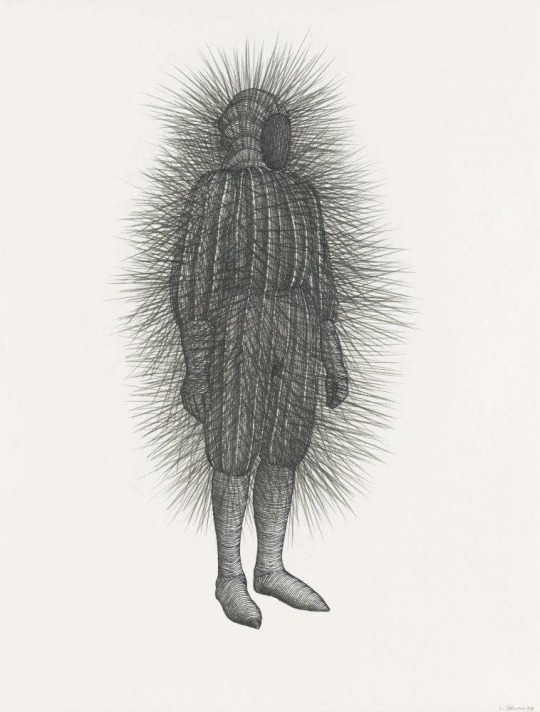
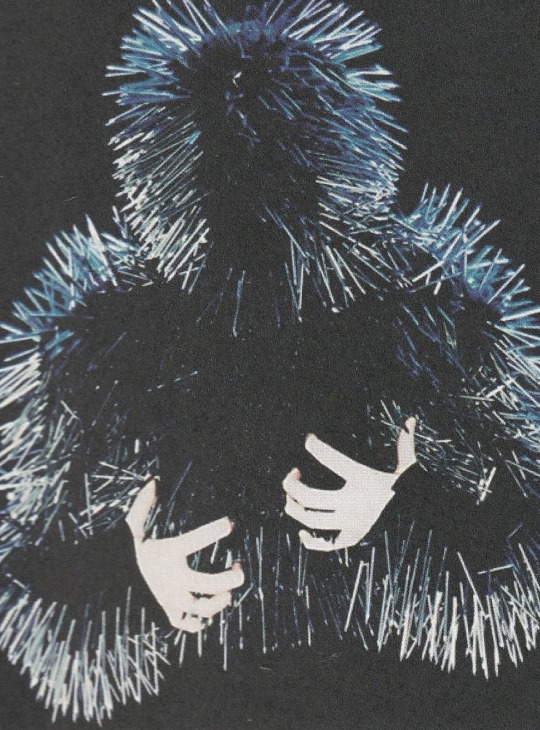
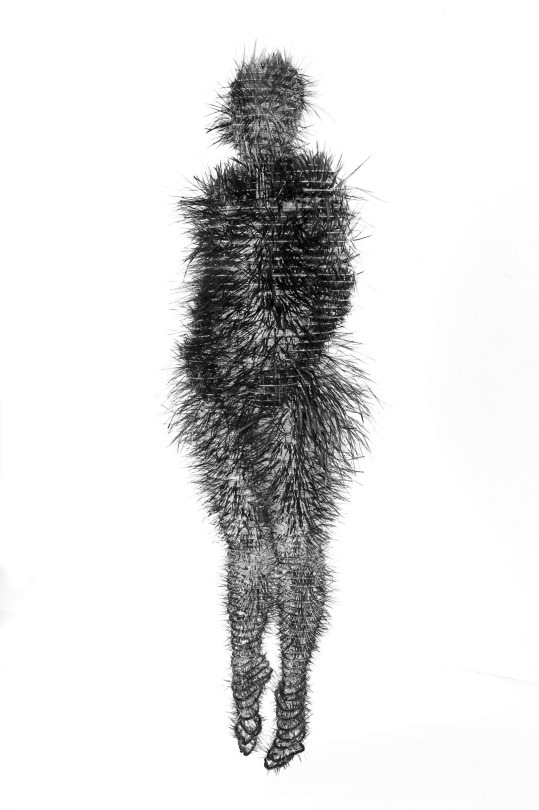

Knife Angel - Alfie Bradley / Matthew Swift / Walter Oltmann / Andrew Groves x / Marliène Oliver / Siberian bear hunting armor 1800s
#knife angel#alfie bradley#andrew groves#matthew swift#walter oltmann#marilène oliver#1800s#19th century#siberia#art#artwork#art work#parallels#comparatives#compilation#marliene oliver#armor#armour
11K notes
·
View notes